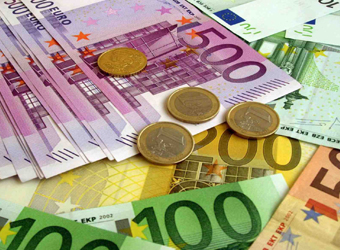The euro fell on Friday for the second consecutive day after the European Central Bank (ECB) on Thursday extended its bond-buying programme longer than many had anticipated, even as it cut the size of the monthly purchases.
The ECB said it would reduce its monthly asset buys to 60 billion euros starting in April from 80 billion euros currently and extend purchases to December from March. It reserved the right to increase the size of purchases again.
Underlying its promise for extensive stimulus, the ECB predicted inflation at 1.7 percent in 2019, arguing that more-costly energy could boost consumer prices even without lifting the underlying trend.
“The extension of the programme was longer than most had expected, and a lot of the language … was pretty dovish,” said Erik Nelson, a currency analyst at Wells Fargo in New York.
“Inflation forecasts were pretty subdued all the way out to 2019, and growth forecasts were pretty low, and the risks are tilted to the downside.”
The euro was last down 0.66 percent at $1.0545.
The U.S. Federal Reserve is widely expected to raise interest rates for the first time this year when it meets next week but may take a cautious tone on the economy.
Traders will focus on the Fed’s economic projections, known colloquially as the dot plot, for indications of any change in expectations following Donald Trump’s surprise election as U.S. president on Nov. 8.
Trump’s victory increased market expectations of greater fiscal stimulus that could boost economic growth and inflation.
“In the last three or four meetings, we’ve seen a continual marking down in the dot plot,” Nelson said, “so even if you see the officials maintain the current forecast, it could be viewed as mildly hawkish.”
The dollar gained 0.55 percent to 101.66 against a basket of six major currencies. Against the Japanese yen, the greenback increased as high as 115.27 yen, its highest since Feb. 9, and was last up 1.08 percent at 115.25 yen.
Source: Reuters
